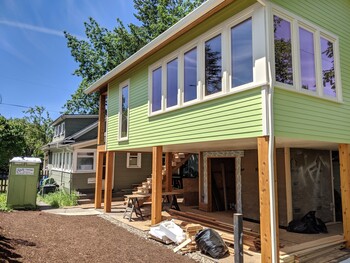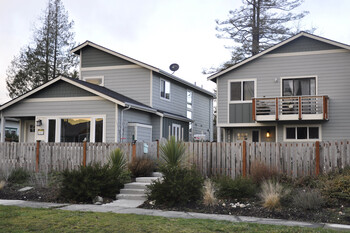
When it comes to choosing a home, one of the primary decisions potential homeowners face is whether to purchase an attached home or a detached home. This choice significantly impacts lifestyle, budget, and even future property values. Both options come with their unique benefits and drawbacks, making it essential to understand the differences and consider personal preferences and needs. In this article, we will explore the key distinctions between attached and detached homes, examining various factors such as cost, maintenance, privacy, and community.
Definition and Types
Attached Homes: Attached homes share one or more walls with neighboring properties. Common types of attached homes include townhouses, duplexes, and row houses. These homes often belong to a larger community or development and may come with shared amenities such as pools, gyms, or playgrounds.
Detached Homes: Detached homes are standalone structures that do not share any walls with other properties. They are typically single-family homes situated on individual plots of land, offering more privacy and space compared to attached homes.
Cost Considerations
 One of the most significant factors influencing the decision between an attached and a detached home is cost. Generally, attached homes are more affordable than detached homes. The reasons for this include:
One of the most significant factors influencing the decision between an attached and a detached home is cost. Generally, attached homes are more affordable than detached homes. The reasons for this include:
- Land Costs: Detached homes require more land, which can be a considerable expense, especially in urban areas where land is scarce and expensive.
- Construction Costs: Building attached homes is often cheaper due to the shared walls and infrastructure, reducing material and labor costs.
- Utilities and Maintenance: Attached homes may benefit from shared utilities and maintenance responsibilities, further reducing costs for homeowners.
For first-time buyers or those on a tight budget, attached homes can offer an affordable entry point into homeownership without sacrificing too much in terms of space or amenities.
Maintenance and Responsibilities
Attached Homes: Maintenance responsibilities in attached homes are often shared among homeowners, especially in developments with homeowners’ associations (HOAs). This can include exterior upkeep, landscaping, and shared facilities. While HOAs can help alleviate the burden of maintenance, they also come with monthly or annual fees and may impose restrictions on property modifications.
Detached Homes: Owners of detached homes have full responsibility for the maintenance and upkeep of their property. This includes the exterior, yard, and any additional structures like garages or sheds. While this offers more control over the property, it also requires a greater time and financial commitment.
Privacy and Space
Attached Homes: One of the main drawbacks of attached homes is the potential lack of privacy. Sharing walls with neighbors can lead to noise issues, and outdoor spaces such as yards or patios are often smaller and less private. Additionally, attached homes are usually part of a more densely populated community, which may limit the sense of personal space.
Detached Homes: Detached homes offer significantly more privacy and space. With no shared walls, homeowners are less likely to be disturbed by neighbors, and they have the freedom to design and use their outdoor space as they see fit. Detached homes are ideal for those who value solitude and prefer larger yards for gardening, entertaining, or other outdoor activities.
Community and Lifestyle
Attached Homes: Living in an attached home often means being part of a close-knit community. This can be beneficial for those who enjoy social interactions and community events. Shared amenities like pools, gyms, and community centers foster a sense of camaraderie among residents. Additionally, security is often enhanced in these communities, with gated entrances or neighborhood watch programs.
Detached Homes: While detached homes can also be part of vibrant neighborhoods, the level of community interaction is usually lower compared to attached home developments. Detached homeowners may have to put in more effort to connect with their neighbors. However, they also have the flexibility to choose the level of interaction they desire, creating a balance between community involvement and personal space.
Location and Convenience
Attached Homes: Attached homes are often found in urban or suburban areas where land is at a premium. This makes them a convenient option for those who want to live close to city centers, workplaces, schools, and other amenities. The proximity to public transportation, shopping centers, and entertainment options can significantly enhance the quality of life for attached home residents.
Detached Homes: Detached homes are more likely to be located in suburban or rural areas where larger plots of land are available. While this can mean a longer commute to work or city amenities, it also provides a quieter, more relaxed living environment. The choice of location often depends on the buyer’s lifestyle preferences and priorities.
 Investment and Resale Value
Investment and Resale Value
Attached Homes: The resale value of attached homes can be influenced by various factors, including the overall condition of the development, the quality of shared amenities, and the reputation of the HOA. While attached homes tend to appreciate in value, they may not do so at the same rate as detached homes, especially in areas where detached properties are in higher demand.
Detached Homes: Detached homes typically have a higher resale value due to their greater privacy, space, and potential for customization. These properties are often more desirable to a broader range of buyers, making them a sound investment. However, market conditions and location will always play a crucial role in determining property values.
Environmental Considerations
Attached Homes: Attached homes are often more environmentally friendly due to their smaller footprint and shared walls, which can lead to better energy efficiency. Heating and cooling costs are generally lower, and the concentration of homes in a smaller area can reduce the need for extensive infrastructure and transportation.
Detached Homes: While detached homes offer more space, they can be less energy-efficient due to their larger size and greater exposure to the elements. However, homeowners have the freedom to implement eco-friendly features such as solar panels, rainwater harvesting systems, and extensive gardens to offset their environmental impact.
Conclusion
The decision between an attached home and a detached home ultimately depends on individual preferences, lifestyle needs, and financial considerations. Attached homes offer affordability, convenience, and a strong sense of community, making them ideal for those who prioritize these aspects. On the other hand, detached homes provide more privacy, space, and long-term investment potential, appealing to those who value independence and personal freedom.
By carefully weighing the pros and cons of each option, potential homeowners can make an informed decision that aligns with their goals and enhances their quality of life. Whether choosing an attached or detached home, the key is to find a property that feels like home and meets the unique needs of the buyer and their family.

Leave a Reply